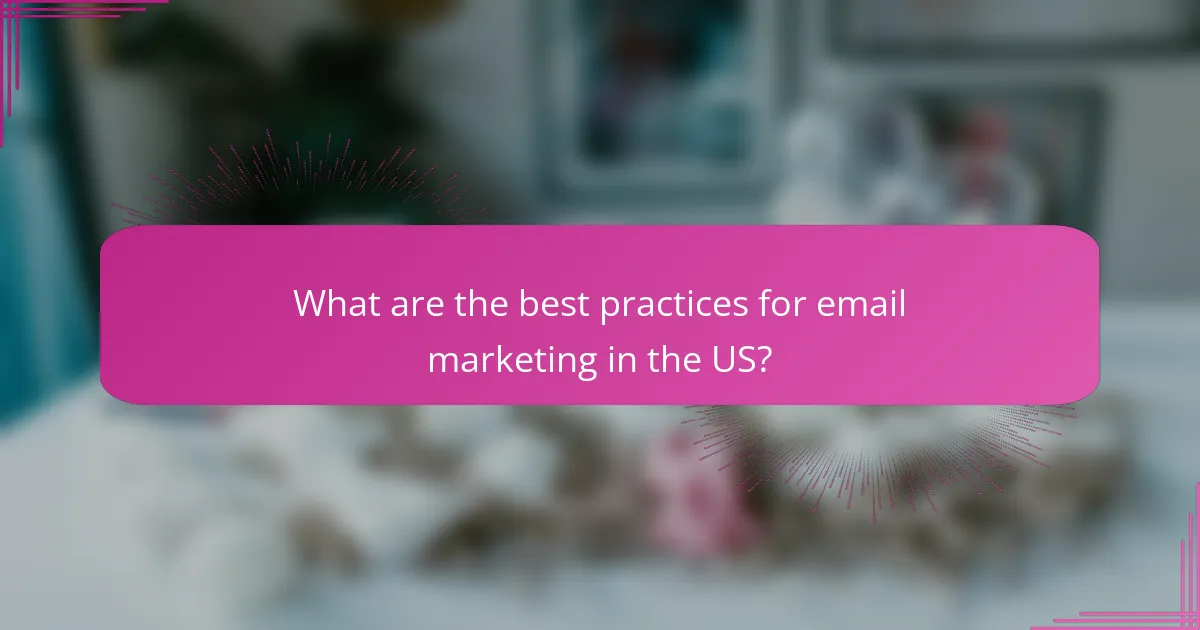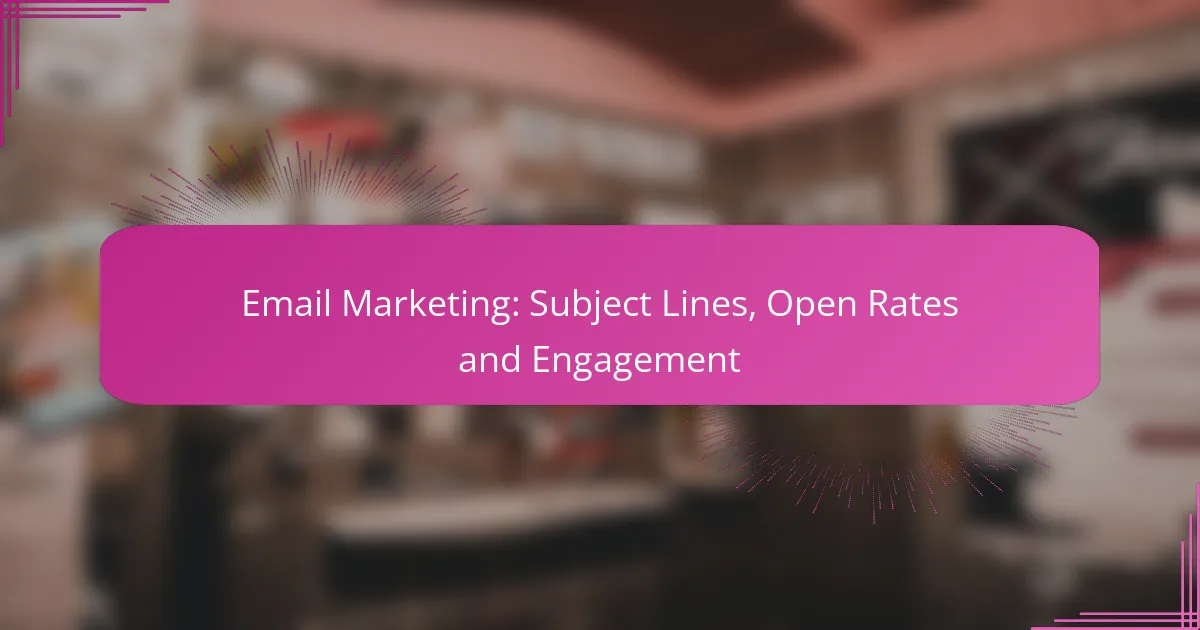Email marketing success hinges on the effectiveness of subject lines, which play a vital role in capturing attention and boosting open rates. By focusing on personalization, urgency, and clarity, marketers can significantly enhance engagement with their content. Additionally, understanding factors like sender reputation and audience segmentation is crucial for optimizing email performance and ensuring messages resonate with recipients.

How to write effective email subject lines?
Effective email subject lines are crucial for capturing attention and increasing open rates. A well-crafted subject line can entice recipients to engage with your content, making it essential to focus on personalization, urgency, clarity, and engagement techniques.
Use personalization techniques
Personalization in subject lines can significantly boost open rates. Including the recipient’s name or referencing their previous interactions can create a sense of relevance and connection. For example, “John, your exclusive offer awaits!” feels more engaging than a generic message.
Consider segmenting your audience based on preferences or behaviors to tailor your subject lines further. This approach allows you to craft messages that resonate with specific groups, enhancing the likelihood of engagement.
Incorporate urgency and scarcity
Creating a sense of urgency or scarcity can motivate recipients to act quickly. Phrases like “Limited time offer” or “Only a few spots left” encourage immediate engagement. This tactic can be particularly effective in promotional emails where time-sensitive deals are involved.
Be cautious not to overuse this strategy, as it may lead to desensitization. Reserve urgency for genuine opportunities to maintain credibility and effectiveness.
Keep it concise and clear
Conciseness is key in email subject lines. Aim for around 6-10 words to ensure clarity and impact. A straightforward subject line like “50% Off Your Next Purchase” quickly conveys the message without unnecessary fluff.
Clear language helps recipients understand the email’s purpose at a glance. Avoid jargon or overly complicated phrases that could confuse or deter potential readers.
Utilize questions to engage
Questions can pique curiosity and encourage recipients to open your email. A subject line such as “Are you ready for summer savings?” invites engagement and prompts the reader to find out more. This technique can be particularly effective in newsletters or promotional campaigns.
Ensure that the question aligns with the content of the email to maintain relevance and avoid disappointment. Misleading questions can lead to higher unsubscribe rates.
Test different formats
Experimenting with various subject line formats can help identify what resonates best with your audience. Try A/B testing different styles, such as using emojis, all caps, or different lengths to see which yields higher open rates.
Monitor the performance of your subject lines over time. Adjust your strategies based on data insights to continually improve engagement and effectiveness in your email marketing campaigns.

What impacts email open rates?
Email open rates are influenced by several key factors, including sender reputation, timing, subject line effectiveness, and audience segmentation. Understanding these elements can help improve engagement and ensure your emails reach their intended audience.
Sender reputation and recognition
Sender reputation plays a crucial role in determining whether recipients open your emails. A strong reputation, built through consistent, relevant, and non-spammy communications, increases the likelihood of your emails being opened. Recipients are more likely to engage with emails from familiar and trusted sources.
To maintain a good sender reputation, avoid high bounce rates and spam complaints. Regularly clean your email list and ensure your content aligns with subscriber expectations.
Timing and frequency of emails
The timing and frequency of your emails can significantly affect open rates. Sending emails at optimal times, such as mid-morning or early afternoon on weekdays, often results in higher engagement. Additionally, maintaining a consistent sending schedule helps recipients anticipate your emails.
Avoid overwhelming your audience with too many emails, as this can lead to fatigue and increased unsubscribe rates. A balanced approach, such as sending one to four emails per month, is generally effective.
Subject line effectiveness
Subject lines are critical for capturing attention and encouraging opens. An effective subject line should be concise, engaging, and relevant to the content of the email. Personalization, such as including the recipient’s name or referencing their interests, can also enhance effectiveness.
Consider using action-oriented language and creating a sense of urgency or curiosity. A/B testing different subject lines can provide insights into what resonates best with your audience.
Audience segmentation
Audience segmentation allows you to tailor your emails to specific groups based on demographics, behavior, or preferences. By sending targeted messages, you can increase relevance and improve open rates. Segmented campaigns often outperform generic ones by a significant margin.
Utilize data from previous interactions to create segments. For example, you might group subscribers by purchase history or engagement level. This approach ensures that your content meets the specific needs of each segment, leading to higher engagement rates.

How to increase email engagement?
To increase email engagement, focus on understanding your audience and tailoring your content to their preferences. This involves segmenting your email list, creating compelling content, incorporating interactive elements, and analyzing engagement metrics to refine your strategy.
Segment your email list
Segmenting your email list means dividing your subscribers into smaller groups based on specific criteria such as demographics, interests, or past behaviors. This allows you to send targeted messages that resonate with each group, leading to higher open and click-through rates.
For example, you might create segments for new subscribers, frequent buyers, and inactive users. Tailoring your content for each segment can significantly enhance engagement, as recipients receive information that is relevant to them.
Use compelling content
Compelling content is crucial for capturing attention and encouraging engagement. This includes writing attention-grabbing subject lines, using clear and concise language, and providing valuable information that meets your audience’s needs.
Consider incorporating storytelling, visuals, or personalized recommendations to make your emails more engaging. A well-crafted email that speaks directly to the reader’s interests can lead to higher engagement rates.
Incorporate interactive elements
Interactive elements such as polls, quizzes, or clickable buttons can significantly boost engagement by encouraging recipients to participate actively. These features make emails more dynamic and can lead to increased click-through rates.
For instance, including a short survey within your email can provide valuable feedback while keeping your audience engaged. Ensure that interactive elements are easy to use and mobile-friendly to maximize participation.
Analyze engagement metrics
Analyzing engagement metrics is essential for understanding how your emails perform. Key metrics to track include open rates, click-through rates, and conversion rates, which can provide insights into what works and what doesn’t.
Regularly reviewing these metrics allows you to adjust your strategies accordingly. For example, if you notice low open rates, consider testing different subject lines or send times to improve performance. Using A/B testing can also help identify the most effective approaches for your audience.

What are the best practices for email marketing in the US?
Effective email marketing in the US involves adhering to regulations, optimizing for user experience, and crafting engaging content. Implementing best practices can significantly improve open rates and overall engagement.
Follow CAN-SPAM regulations
To comply with CAN-SPAM regulations, ensure that your emails include a clear opt-out option and accurate sender information. This law mandates that recipients can easily unsubscribe from future communications, which helps maintain trust and compliance.
Additionally, avoid misleading subject lines and ensure that your email content is relevant to the recipients. Violating these regulations can lead to hefty fines, so staying informed about compliance is crucial for your email marketing strategy.
Optimize for mobile devices
With a significant portion of emails opened on mobile devices, optimizing your emails for mobile viewing is essential. Use responsive design techniques to ensure your emails look good on various screen sizes, enhancing user experience.
Keep subject lines concise and content easily scannable. Utilize larger fonts and buttons to facilitate interaction. Testing your emails on multiple devices before sending can help identify any issues and improve engagement rates.
